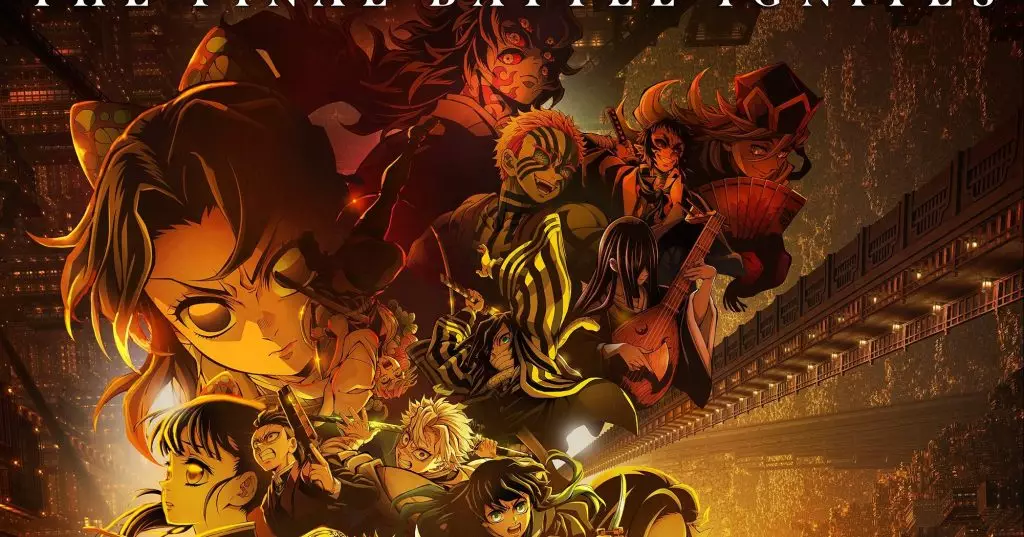Demon Slayer: Kimetsu no Yaiba Infinity Castle has shattered conventional expectations, establishing itself as a powerhouse within the global entertainment industry. Its remarkable box office achievements in Japan not only reaffirm the franchise’s immense popularity but also signal a seismic shift in how anime titles are perceived in mainstream markets. The film’s record-breaking opening underscores a hunger for well-crafted, emotionally resonant storytelling, coupled with strategic marketing and the franchise’s deeply ingrained cultural resonance. This film’s extraordinary performance is more than a fleeting triumph—it’s a testament to the potential of anime to rival Hollywood blockbusters in financial octane and audience engagement.
A Paradigm Shift in Moviegoing Trends
Historically, anime films have often been niche attractions, primarily appealing to core fans. However, the overwhelming numbers posted by Infinity Castle indicate a fundamental change in consumer behavior. Over 3.8 million viewers flocked to Japanese theaters during its opening weekend alone, with the cumulative four-day attendance surpassing five million. What makes this even more compelling is the record-breaking box office intake of over 7.3 billion yen (approximately $49.6 million), placing the film as the second highest-earner in Japan for the year. Such figures highlight that anime, particularly a well-established franchise like Demon Slayer, has transcended its previous boundaries, now commanding mainstream attention and substantial box office dominance akin to major Hollywood franchises.
Furthermore, the film’s dominance isn’t limited merely to audience numbers but extends to technical achievements within the cinema experience. The record Imax gross of over $3 million signifies a new standard for immersive viewing of animated features. It suggests that consumers are eager to invest in premium experiences to better appreciate the detailed animation, dynamic fight scenes, and emotional storytelling—elements that have become hallmarks of the Demon Slayer universe.
Breaking Records and Setting New Benchmarks
Critical to understanding the film’s success is recognizing how it surpasses previous benchmarks set by its predecessor, Mugen Train. The latter, which had previously set the all-time Japanese box office record, grossed over 40 billion yen domestically and crossed $500 million globally. Infinity Castle has already eclipsed many of those initial records within its first four days, demonstrating how the franchise’s momentum continues to grow exponentially.
This isn’t merely about numbers; it’s about the cultural impact and the storytelling mastery behind the film. The high-octane battles, compelling character development, and meticulous animation have resonated deeply with viewers. It’s a clear indication that anime is no longer an underdog in the cinematic arena but a core component of global entertainment. This shift opens doors for even more significant investment, international distribution, and the cultivation of international audiences. Sony and Crunchyroll’s planned releases showcase strategic foresight, aiming to capitalize on this momentum globally.
Notably, the international rollout begins with a well-planned schedule, with North America slated for release in September. This targeted approach emphasizes that the film’s commercial appeal extends beyond Japan’s borders, a testament to the universality of its themes and storytelling prowess.
Beyond the Bottom Line: Shaping the Future of Animation
The staggering box office numbers challenge industry players to reevaluate the potential of animated films in a competitive cinematic landscape dominated by live-action blockbusters. Demon Slayer’s success underscores that compelling narrative, high-quality animation, and cultural storytelling can elevate anime to a position of unparalleled prominence. It pushes Hollywood and other markets to reconsider how they produce, market, and distribute animated content.
Moreover, the film’s success is a vindication of the collaborative effort behind the franchise—Ufotable’s exquisite animation, Haruo Sotozaki’s direction, and the strategic alliances forged by Aniplex and Toho. Together, they have created a product that not only entertains but also elevates the artistic standards of modern animation.
The film’s economic triumph hints at an inevitable future where animation is seen not just as children’s entertainment but as a robust, competitive force capable of generating significant revenue and cultural influence. It questions the traditional hierarchy of blockbuster cinema and invites industry innovators to harness the emotional depth and artistic potential unique to animation.
While critics might argue that the franchise’s hype inflates initial figures, the sustained performance and international interest offer compelling evidence of a genuine cultural wave. The future of anime, bolstered by breakthroughs like Infinity Castle, seems poised to challenge the very fabric of global cinematic norms—an exciting development for fans and industry insiders alike.
